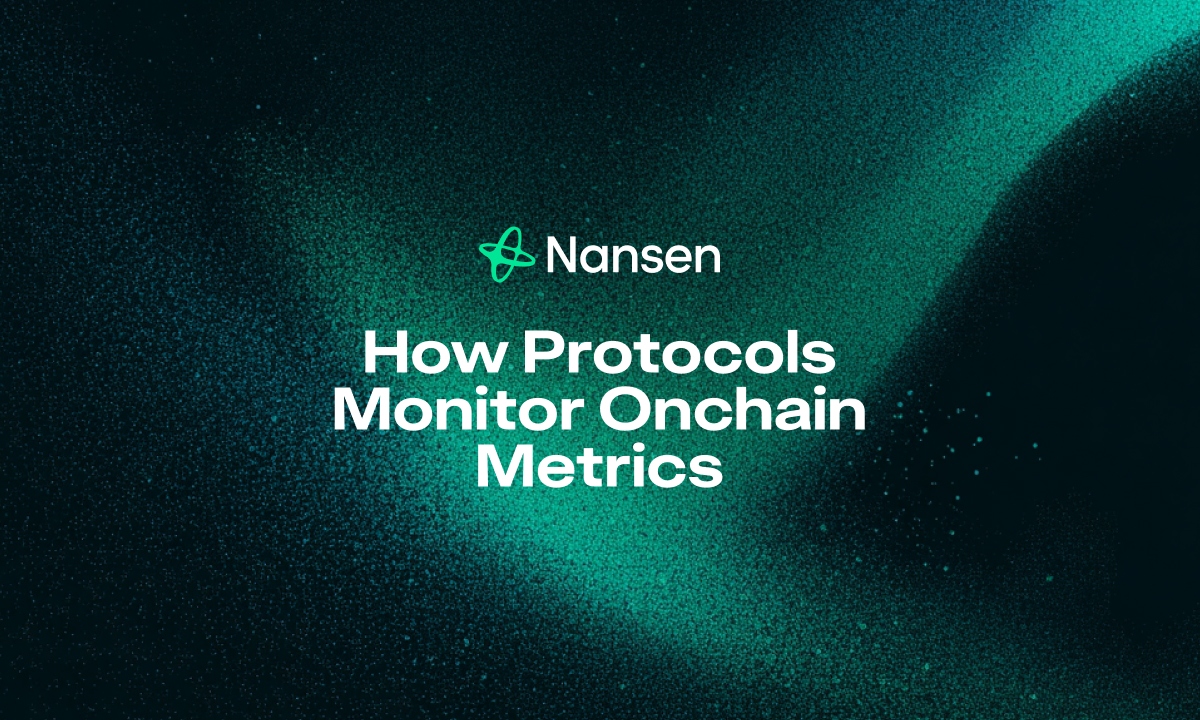Protocols monitor onchain metrics by querying blockchain nodes directly, integrating with specialized onchain data providers, or building custom data pipelines. This continuous monitoring delivers key insights into protocol health, user engagement, liquidity, and security. By analyzing both real-time and historical blockchain data, protocols gain a comprehensive understanding of their ecosystem dynamics, enabling proactive risk management and data-driven optimization of decentralized applications.
Why Protocols Monitor Onchain Metrics for Sustainable Growth and Security
Monitoring onchain metrics is essential for decentralized protocols to maintain transparency and ensure sustainable development while safeguarding users.
Ensuring Protocol Health and Stability
Protocols track Total Value Locked (TVL), transaction volumes, and smart contract interactions to evaluate operational health. Sudden anomalies can signal performance issues or vulnerabilities requiring quick attention.
Understanding User Behavior and Engagement
Analyzing onchain data such as unique active wallets and transaction frequency reveals how users interact with the protocol. This insight helps tailor features and improve adoption by aligning with real user behavior.
Optimizing Economic Models and Incentives
Tracking token distribution, staking levels, fees generated, and liquidity provision enables protocols to fine-tune tokenomics and incentive structures, promoting long-term economic sustainability.
Identifying Security Risks and Anomalies
Constant metric monitoring helps detect suspicious transaction patterns, large asset transfers, or liquidity fluctuations indicative of exploits or market manipulation, facilitating rapid incident response.
Critical Onchain Metrics Protocols Track for Operational Excellence
Protocols focus on a broad set of onchain metrics adjusted to their functionality, but several are universally vital.
Core Protocol Activity Metrics
- Total Value Locked (TVL): Reflects the total assets staked within the protocol, indicating user trust and capital commitment.
- Unique Active Addresses: Measures distinct wallets interacting over time, signaling user base size and engagement.
- Transaction Volume: Captures activity level by counting transactions or value processed.
- Number of Users/Holders: Counts wallets holding the protocol’s native token or engaging with smart contracts.
- Contract Interactions: Tracks calls to protocol-specific smart contracts, revealing feature utilization.
Financial and Liquidity Metrics
- Liquidity Pool Balances: Amount of assets in liquidity pools, essential for assessing market depth.
- Decentralized Exchange (DEX) Volume: Indicates trading activity on integrated or partner DEXs.
- Stablecoin Flows: Inflows and outflows provide insight into capital movement and market sentiment.
- Impermanent Loss (for Automated Market Makers): Quantifies divergence in asset value due to price fluctuations, critical for liquidity provider risk evaluation.
Governance and Community Metrics
- Voting Participation: Percentage of token holders engaging in governance proposals, reflecting community involvement.
- Proposal Creation/Execution: Frequency and approval rate of governance decisions indicating decentralization health.
- Token Distribution: Wallet holdings analysis to assess ownership concentration or decentralization.
Network and Security Metrics
- Gas Usage: Monitors transaction costs and network congestion affecting user experience.
- Block Production/Finality: Evaluates blockchain performance, which underpins protocol reliability.
- Known Exploit Attempts: Tracks suspicious addresses/transactions to identify attack patterns.
Effective Methods and Tools Protocols Use for Onchain Data Monitoring
Protocols adopt a mix of technical approaches and platforms tailored to their scale and needs.
Direct Node Querying and Custom Data Infrastructure
Running dedicated blockchain nodes or connecting to RPC endpoints allows direct raw data access. Protocols often build custom ETL pipelines with tools like Apache Kafka and PostgreSQL, ensuring maximum control but requiring significant engineering investment.
Leveraging Third-Party Onchain Analytics Platforms
Platforms such as Nansen provide pre-indexed, comprehensive onchain analytics with APIs and dashboards. Integrating these services offers cost-efficient access to granular data without building full infrastructure in-house.
Integrating with Data Indexers and APIs
Solutions like The Graph enable protocol teams to define custom subgraphs for real-time event indexing, using GraphQL for easy querying. Additional API services (e.g., Etherscan, Alchemy) offer filtered blockchain data endpoints for transactions and balances.
Building In-House Analytics Dashboards
Protocols frequently develop tailored visualization tools using Grafana, Dune Analytics, or custom front-ends to present key metrics intuitively for operations and decision-making.
Practical Applications of Onchain Analytics to Drive Protocol Success
The actionable insights from onchain monitoring directly influence protocol development, marketing, and security strategies.
Informing Development and Upgrades
Real usage and cost metrics guide feature enhancements or deprecation. High gas fees may prompt optimizations or migration to cost-efficient layers.
Enhancing Marketing and User Growth
User origin, segment activity, and feature popularity data help refine marketing efforts and engage power users, liquidity providers, and active governance participants.
Proactive Risk Management and Incident Response
Alerts on unusual onchain activity enable swift reactions to exploits, flash loans, or market shocks through contract pauses, security upgrades, or community communication.
Frequently Asked Questions
What is the most important onchain metric for a DeFi protocol?
Total Value Locked (TVL) is generally considered the most critical metric, representing the capital secured in the protocol and serving as a proxy for trust, adoption, and economic scale.
How do protocols manage the costs of monitoring onchain data?
Protocols balance self-hosted infrastructure expenses with subscription costs for third-party services, optimizing queries and leveraging indexing tools to control operational costs efficiently.
Can monitoring onchain metrics prevent all protocol exploits?
While onchain monitoring improves detection and mitigation capabilities, it cannot prevent every exploit. It enables real-time identification of suspicious activities but is part of a broader security strategy.
Unlock the Power of Onchain Metrics for Your Protocol
Empowering your protocol with robust onchain monitoring is key to achieving transparency, optimizing performance, and securing your ecosystem. Leveraging advanced analytics platforms like Nansen provides real-time intelligence and actionable insights that keep your protocol adaptive and competitive.
At Nansen, our AI-driven onchain analytics platform offers access to 500M+ labeled crypto wallets and over $2B AUM staked across multiple blockchains. We deliver trusted data and deep insights that help developers, investors, and traders navigate crypto markets with confidence.




